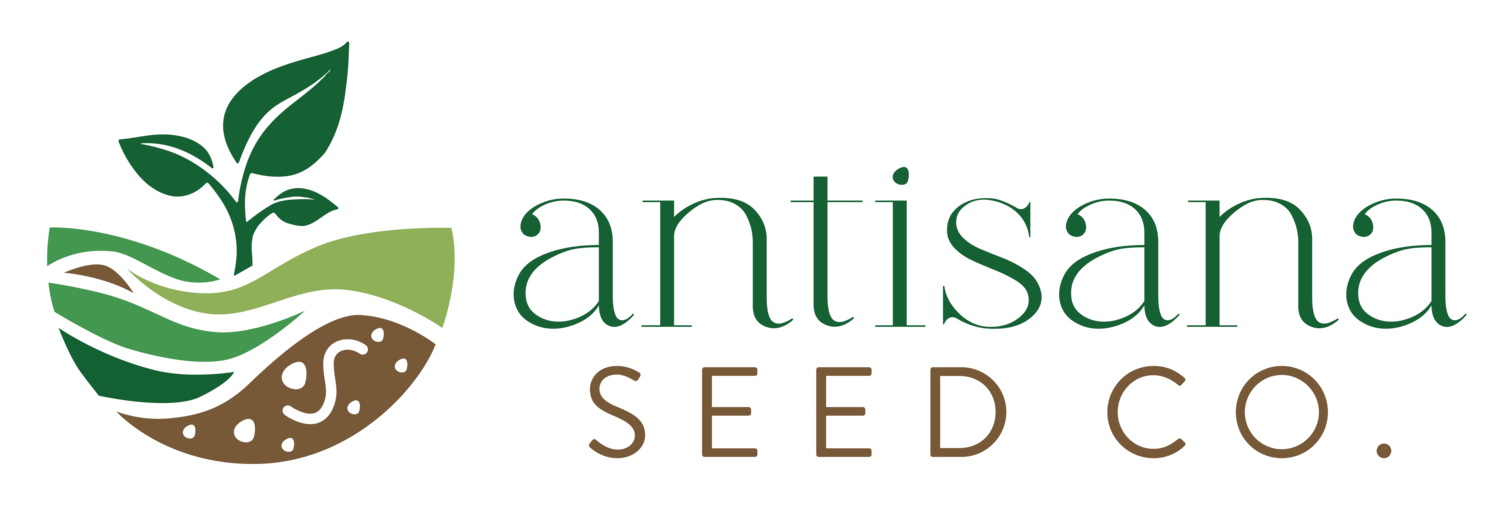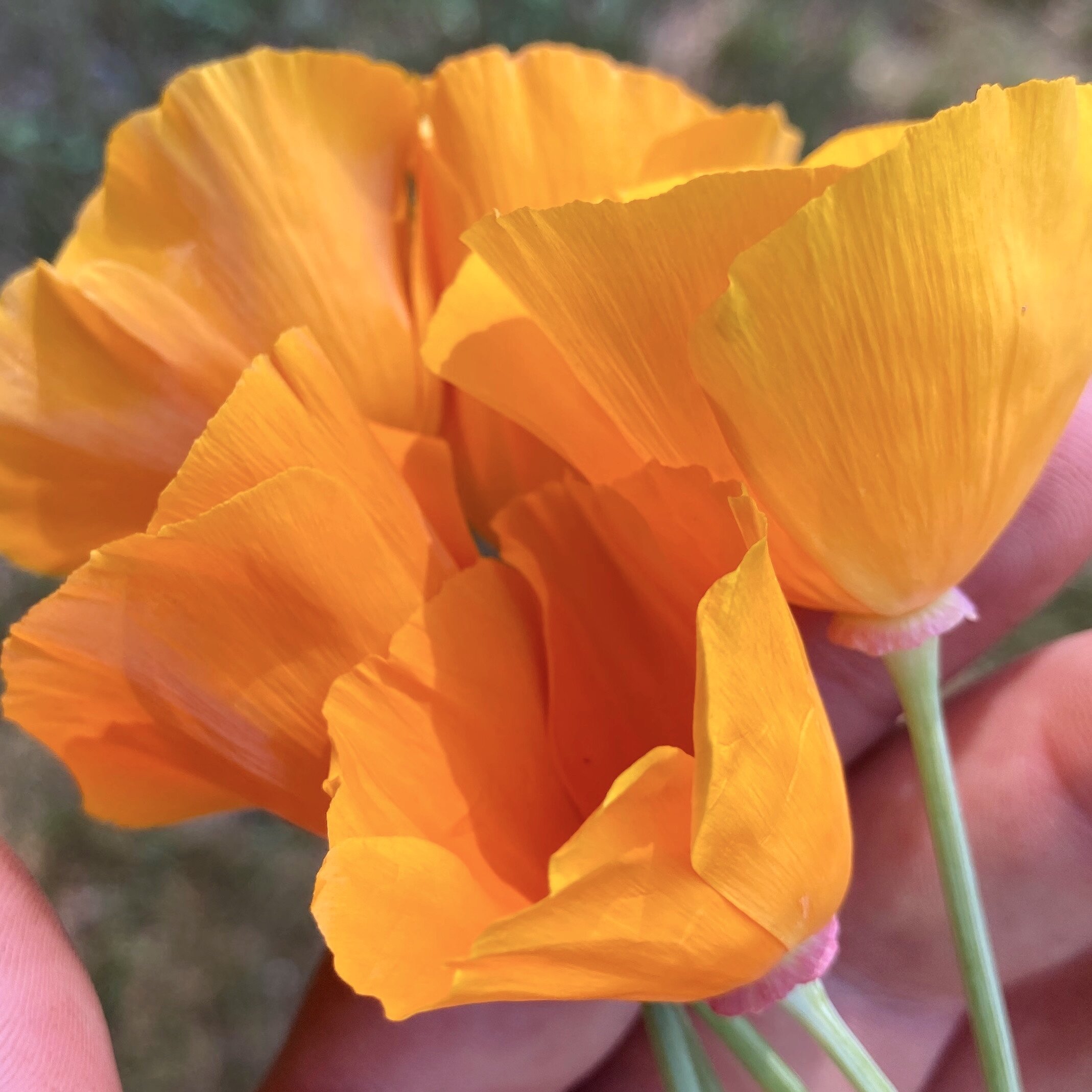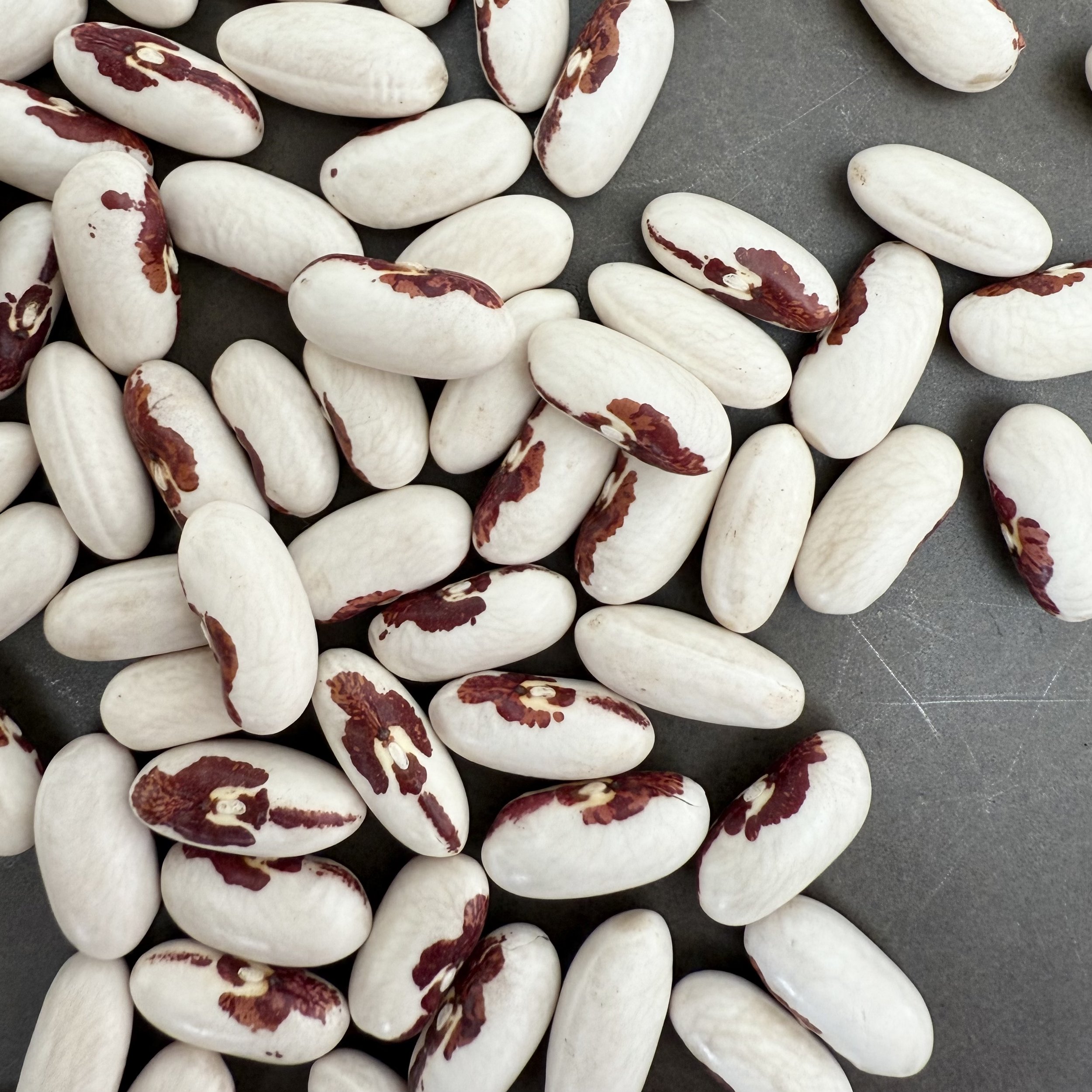Flower, Alpha Calendula
Product Description: (Calendula officinalis) Alpha is among the most versatile varieties of calendula. Its 3-4 inch orange blossoms are sure to brighten up your home or garden and the petals can be used as a tangy edible garnish on cakes or salads. Its high resin content also makes Alpha an ideal variety for medicinal purposes. Tinctures and ointments made from the petals can be used to treat cuts, burns, and bruises. Dried petals can also be made into a natural orange dye for food and fabrics. Each plant grows to just over 2 feet tall in a bush-like habit with many blossoms. Open-pollinated. 75 seeds per packet.
Growing Information: After all danger of frost has passed, direct sow groups of 2-3 seeds about ¼ inch below the soil surface spaced roughly 1 foot apart. Once the seedlings reach a couple of inches in height, thin to just 1 plant per cluster. Successive plantings 1-2 weeks apart will ensure continuous blooming. To transplant, start seeds indoors 4 weeks before your last spring frost. 50 days to maturity.
Seed Saving: Before you begin collecting calendula seeds, you should first allow the blossoms to completely dry on the plant. Adequate airflow during this time is crucial. During the drying process, the petals will fall and the entire blossom will become brown and brittle. The spiky, claw-like seeds will fan out from the seed head (center of the former blossom) as they near maturity. To collect these seeds, softly pinch the seed heads between your fingers above an open collection container. If the seeds are fully mature, they should dislodge very easily when you do this.
Once you have collected enough material, the next step is to separate the viable seeds from the chaff (other plant material). This can be done by hand in small batches or, for larger quantities, we recommend using a “winnowing” technique. This is typically done outdoors by slowly pouring your seeds/chaff through the open air into a collection container located below. When done successfully, the wind will naturally remove the lighter material from the mix, leaving only the heavier seeds in your collection container. If the wind is stronger than usual, hold your containers closer together to avoid losing any viable seeds. If there is no wind, use your breath to blow the lighter plant material away while it passes through the air. Repeat this process until the majority of the chaff has been removed.
Germination Rate: 70%
Product Description: (Calendula officinalis) Alpha is among the most versatile varieties of calendula. Its 3-4 inch orange blossoms are sure to brighten up your home or garden and the petals can be used as a tangy edible garnish on cakes or salads. Its high resin content also makes Alpha an ideal variety for medicinal purposes. Tinctures and ointments made from the petals can be used to treat cuts, burns, and bruises. Dried petals can also be made into a natural orange dye for food and fabrics. Each plant grows to just over 2 feet tall in a bush-like habit with many blossoms. Open-pollinated. 75 seeds per packet.
Growing Information: After all danger of frost has passed, direct sow groups of 2-3 seeds about ¼ inch below the soil surface spaced roughly 1 foot apart. Once the seedlings reach a couple of inches in height, thin to just 1 plant per cluster. Successive plantings 1-2 weeks apart will ensure continuous blooming. To transplant, start seeds indoors 4 weeks before your last spring frost. 50 days to maturity.
Seed Saving: Before you begin collecting calendula seeds, you should first allow the blossoms to completely dry on the plant. Adequate airflow during this time is crucial. During the drying process, the petals will fall and the entire blossom will become brown and brittle. The spiky, claw-like seeds will fan out from the seed head (center of the former blossom) as they near maturity. To collect these seeds, softly pinch the seed heads between your fingers above an open collection container. If the seeds are fully mature, they should dislodge very easily when you do this.
Once you have collected enough material, the next step is to separate the viable seeds from the chaff (other plant material). This can be done by hand in small batches or, for larger quantities, we recommend using a “winnowing” technique. This is typically done outdoors by slowly pouring your seeds/chaff through the open air into a collection container located below. When done successfully, the wind will naturally remove the lighter material from the mix, leaving only the heavier seeds in your collection container. If the wind is stronger than usual, hold your containers closer together to avoid losing any viable seeds. If there is no wind, use your breath to blow the lighter plant material away while it passes through the air. Repeat this process until the majority of the chaff has been removed.
Germination Rate: 70%
Product Description: (Calendula officinalis) Alpha is among the most versatile varieties of calendula. Its 3-4 inch orange blossoms are sure to brighten up your home or garden and the petals can be used as a tangy edible garnish on cakes or salads. Its high resin content also makes Alpha an ideal variety for medicinal purposes. Tinctures and ointments made from the petals can be used to treat cuts, burns, and bruises. Dried petals can also be made into a natural orange dye for food and fabrics. Each plant grows to just over 2 feet tall in a bush-like habit with many blossoms. Open-pollinated. 75 seeds per packet.
Growing Information: After all danger of frost has passed, direct sow groups of 2-3 seeds about ¼ inch below the soil surface spaced roughly 1 foot apart. Once the seedlings reach a couple of inches in height, thin to just 1 plant per cluster. Successive plantings 1-2 weeks apart will ensure continuous blooming. To transplant, start seeds indoors 4 weeks before your last spring frost. 50 days to maturity.
Seed Saving: Before you begin collecting calendula seeds, you should first allow the blossoms to completely dry on the plant. Adequate airflow during this time is crucial. During the drying process, the petals will fall and the entire blossom will become brown and brittle. The spiky, claw-like seeds will fan out from the seed head (center of the former blossom) as they near maturity. To collect these seeds, softly pinch the seed heads between your fingers above an open collection container. If the seeds are fully mature, they should dislodge very easily when you do this.
Once you have collected enough material, the next step is to separate the viable seeds from the chaff (other plant material). This can be done by hand in small batches or, for larger quantities, we recommend using a “winnowing” technique. This is typically done outdoors by slowly pouring your seeds/chaff through the open air into a collection container located below. When done successfully, the wind will naturally remove the lighter material from the mix, leaving only the heavier seeds in your collection container. If the wind is stronger than usual, hold your containers closer together to avoid losing any viable seeds. If there is no wind, use your breath to blow the lighter plant material away while it passes through the air. Repeat this process until the majority of the chaff has been removed.
Germination Rate: 70%






